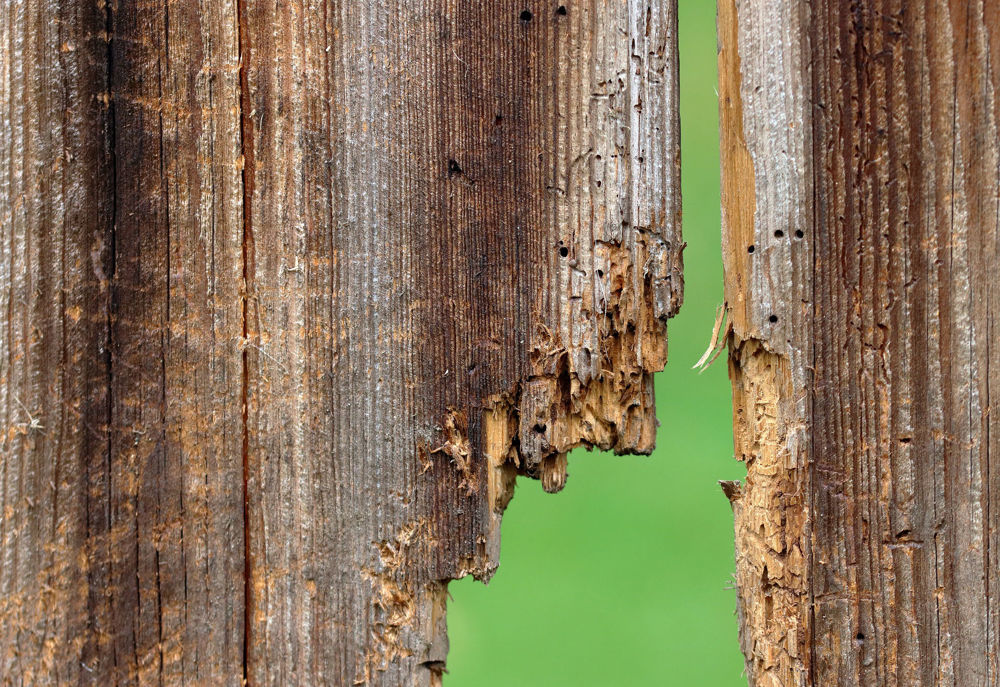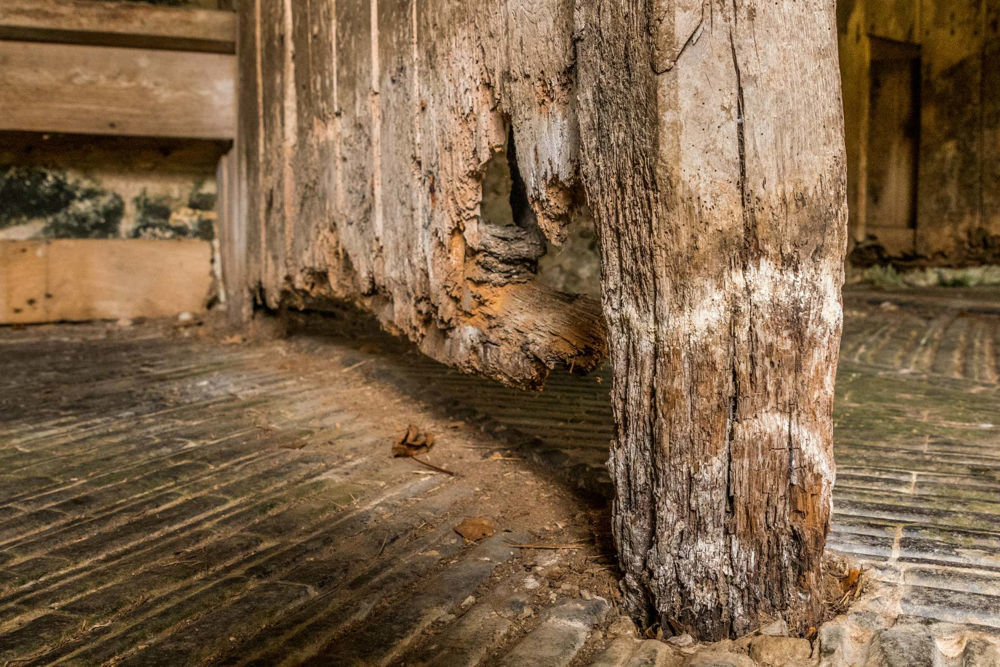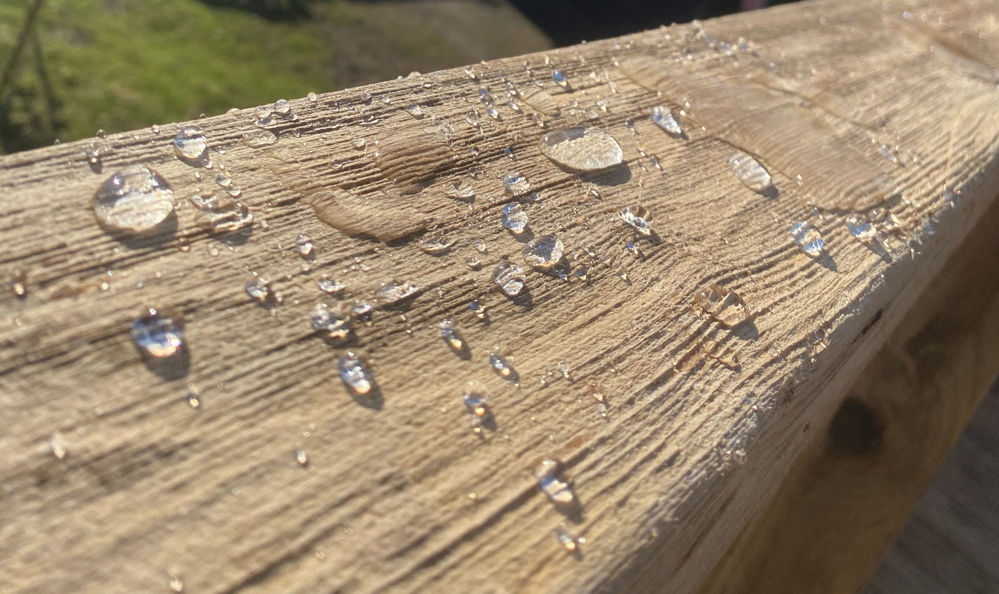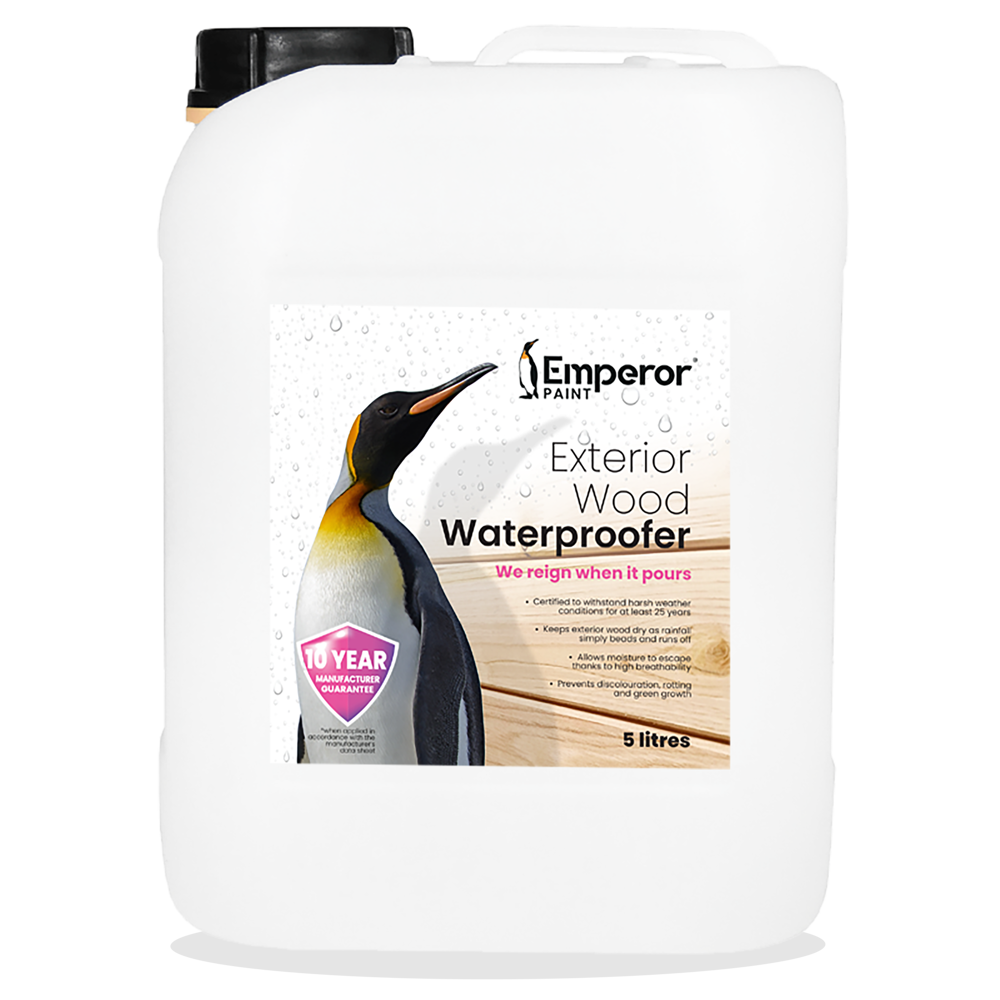
When it comes to outdoor wood, a well-known problem is wood rot, however the cause of wood rot, the types of wood rot and how to prevent it are all less commonly known. That is why our experts have put together this ultimate guide to wood rot so you can find everything you need to know in one place.
What Is Wood Rot?
The first place to start when discussing wood rot is establishing what exactly it is. Rot can generally be classified in two types; dry rot and wet rot.
Dry rot is caused by a fungus called 'Serpula Lacrymans'. This is a fungus that feeds off timber leaving it cracked, brittle and weakened. This can be a significant problem with interior wood when it attacks beams and other structurally important pieces of timber, causing substantial damage that must be treated in order to protect the property. Dry rot can be identified a damp smell, spores and a yellowish fungus. Dry rot tends to grow on timber surfaces where there is a moisture content of around 20%, which is why it is most commonly found on interior surfaces.
Wet rot in contrast, as the name would suggest, is a fungus that tends to grow on more porous surfaces that are exposed to high moisture content of around 50% over long periods of time. Due to the level of moisture required for wet rot, it is more often than not found on outdoor wood such as fencing, decking, sheds and cladding. Wet rot causes timber to soften and weaken significantly, eventually causes chunks of wood to split off from the main structure. Wet rot can be identified by darkened timber, damaged appearance and shrinkage. Furthermore, any signs of water ingress such as organic growth can indicate that there is sufficient moisture within the timber to lead to wood rot.
How To Treat Dry Rot
Dry rot as we have mentioned can be serious in nature, so it is important to identify the issue quickly to prevent more substantial treatment down the line. Dry rot can be treated by preventing moisture sources, applying fungicides to damaged wood and by making repairs to wood that has already been weakened by the rot.
It is recommended that you contact an expert especially if the dry rot is occurring on structural wood.

How To Treat Wet Rot
Due to wet rot primarily being the cause of highly saturated moisture caused by rainfall, it can be treated by providing outdoor wood with the necessary waterproof protection. Bare, natural wood has very little resistance to water ingress, which is why is absorbs large amount of moisture when used outdoors on fencing, log cabins, decking, sheds & other exterior timber surfaces.
By reducing the amount of moisture absorbing into outdoor timber, you prevent the conditions necessary for wet rot to thrive, reducing the likelihood that wet rot can take hold. While the most effective way to prevent wet rot is to protect new timber, by protecting already weathered timber you extend its lifespan and ensure that the damaging cycle of weathering is stopped.
The most effective way to treat bare wood is to use a high-quality wood waterproofer. By applying dedicated waterproofing treatment to the timber, you prevent the moisture that leads to wet rot. The reason it is recommended to use a wood waterproofer is that not all wood treatments are waterproof. To be waterproof, a treatment must be water repellent. Without water repellent properties, moisture will simply soak through the surface and into the timber. This is often the case with many wood paints, stains and varnishes, although they can offer some level of protection to the timber against water ingress.
Furthermore, you must use a highly breathable treatment. By being highly breathable, a wood treatment can allow any moisture inside the timber to naturally escape, ensuring it stays dry. Many wood treatments, especially oil-based ones can seal the pores of wood, preventing water vapour from naturally passing through the timber. By trapping water vapour, these low breathability wood treatments can cause a build-up of moisture, which can lead to wet rot and eventually cause the coating that was applied to blister and flake. For this reason, any product applied to the wood should be highly breathable if you want to protect outdoor timber from becoming damp.
Emperor Exterior Wood Waterproofer is a super hydrophobic treatment, meaning it is ultra-water repellent. It has been specifically designed to protect bare, nature timber surfaces from the damaging effects that weathering can have, including rotting, organic growth and discolouration. It achieves this by causing any water that lands on the wood to simply fall off without soaking into the timber. While reducing water absorption, it is also highly breathable which means any water vapour can naturally breathe out of the wood.
This combination of water repellent properties and high breathability allows the treatment to keep exterior wood dry and extends the life span of the timber by reducing the damaging effects that moisture can have over-time.

This is all achieved by the highly advanced nano-technology within Emperor Exterior Wood Waterproofer. This nano-technology chemically bonds to the wood, meaning instead of creating a coating on the surface of the timber, it becomes part of the timber itself. The benefit of this is that there is no coating on the wood to become weathered, and the treatment has no impact on the appearance of wood, ensuring it maintains its natural beauty. This also means that there is no coating or film to become weathered, giving the treatment extremely high durability. In independent 25 year weathering tests, Emperor Exterior Wood Waterproofer was found to have no change in performance or appearance, meaning it will withstand any weather conditions for a minimum of 25 years, without the need for re-application.

A Step-By-Step Guide To Treating Wood Rot
1. REMOVE SURFACE DIRT
When it comes to treating outdoor rotting wood, the first step of the process is to clean off any surface level dirt from the timber. On wood where large amounts of dirt is present, a power washer is the best way to remove these contaminants from the surface. On any timber that has small amounts of dirt, you can wash this down using a soft brush and hot soapy water.
2. APPLY A FUNGICIDAL CLEANER
While you have removed surface dirt, this does not mean the wood is clean. It is essential to apply a fungicidal cleaner to the wood in order to prevent any fungal growth. Any new wood under the age of 12 months is unlikely to be suffering from fungal growth, so if there is no signs of lichens, mildew or moss, you do not need to treat fungus.
On any wood over the age of 12 months, apply Emperor Exterior Cleaner to the wood and leave this to dry for two hours. After the two hour period, any fungus present on the wood will be killed and the wood is fully clean ready to be treated. If you skip this step, you can run the risk of organic growth blooming on the wood, compromising its appearance.
3. REPAIRS
Now you have cleaned the wood and ensured there is no fungal growth on the surface, it is time to remove any repairs to the timber if you are treating wood that has suffered from wood rot.
Emperor Wood Waterproofer is an invisible treatment, so it is important to make repairs that are in keeping with the current wood. This can be done using wood fillers or epoxies, that come in a range of colours. These can help to repair any areas that have rotted away, leaving you with wood that looks like new. It is important to remove any dead, rotted wood before you do this, to ensure the structural strength of the timber.
4. TREATMENT
Emperor Exterior Wood Waterproofer is an extremely easy to apply thin, clear liquid that can be applied using a brush, roller or a pump-sprayer. Simply apply one-coat of the treatment to the wood at a coverage of 5m2 per litre and allow it to dry for 1 hour at 20°C. Take your time applying the product as although it does not leave a finish, you want to ensure you apply it evenly to the wood. After it has had time to dry, the treatment will be completely invisible and will begin to repel any water applied to it.
TOP TIP: Masking any surrounding areas such as windows and putting down a dust sheet will ensure you do not get the treatment on anything you do not want to protect, making the clean-up process as easy as possible.
Frequently Asked Questions
Q. CAN I TREAT NEW WOOD AND WEATHERED WOOD?
By applying a waterproofing coating to outdoor wood, you prevent moisture from entering into the structure through water ingress. This means that you prevent the cycle of rotting that leads to wood becoming damaged. While the best way to treat wood from rotting is to protect it at the earliest possible opportunity before it rots, by protecting wood that has already been weathered you extend its life span and prevent the need to replace the full surface.
We hope we have answered any questions you may have had regarding wood rot. If you have any other questions, feel free to get in touch with our team of experts who are on hand to assist you. Contact them today by emailing info@emperorpaint.co.uk or calling them on 0161 509 9009. Alternatively, shop Emperor Exterior Wood Waterproofer and get FREE delivery on all orders.

